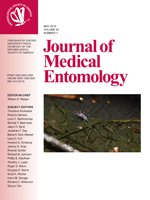Cyclopentanone is a saturated monoketone typically used as an intermediate in the manufacture of pharmaceuticals, biologicals, insecticides, and rubber chemicals. Recently, it has been demonstrated that cyclopentanone activates the cpA CO2 receptor neuron on the maxillary palp of mosquitoes, suggesting that it may be a viable alternative to CO2 as an attractant for mosquitoes. Furthermore, semifield experiments showed that traps baited with cyclopentanone attract Culex quinquefasciatus Say at a similar rate to those baited with CO2. We evaluated the field efficacy of cyclopentanone as an alternative to CO2 in Centers for Disease Control (CDC) light traps and counterflow geometry (CFG) traps commonly used to collect mosquitoes in surveillance programs. Three pairwise trials and four Latin square trials were conducted across three peri-urban sites, comprising two saltwater sites and one freshwater site, in southeast Queensland, Australia. In all trials, CO2-baited traps outperformed traps baited with cyclopentanone. Carbon dioxide-baited CDC traps collected significantly more total mosquitoes, Aedes vigilax (Skuse), Culex sitiens Weidemann, and Culex annulirostris Skuse, than those baited with ≥99% cyclopentanone in pairwise trials. Similarly, in almost all Latin square trials, CO2-baited CDC and CFG traps collected significantly greater numbers of total mosquitoes, Ae. vigilax, Cx. annulirostris, Culex orbostiensis Dobrotworsky, and Cx. sitiens when compared with CFG traps baited with 20% cyclopentanone. Our trials indicate that cyclopentanone is not effective as a mosquito attractant in the field and cannot be used as a simple substitute for CO2 in commonly used mosquito surveillance traps.
How to translate text using browser tools
1 May 2015
Field Comparison of Cyclopentanone Versus Carbon Dioxide as an Attractant for Adult Mosquitoes in Southeast Queensland, Australia
J. C. D. Philippe-Janon,
A. F. Van Den Hurk,
D. P. Francis,
M. A. Shivas,
C. C. Jansen
ACCESS THE FULL ARTICLE
It is not available for individual sale.
This article is only available to subscribers.
It is not available for individual sale.
It is not available for individual sale.

Journal of Medical Entomology
Vol. 52 • No. 3
May 2015
Vol. 52 • No. 3
May 2015
Australia
carbon dioxide
cyclopentanone
mosquito surveillance
traps




